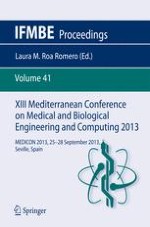2014 | OriginalPaper | Buchkapitel
Brain Activity Characterization Induced by Alcoholic Addiction: Spectral and Causality Analysis of Brain Areas Related to Control and Reinforcement of Impulsivity
verfasst von : J. Guerrero, A. Rosado, M. Bataller, J. V. Francés, T. Iakymchuk, A. Luque-García, V. Teruel-Martí, J. Martínez-Ricós
Erschienen in: XIII Mediterranean Conference on Medical and Biological Engineering and Computing 2013
Aktivieren Sie unsere intelligente Suche, um passende Fachinhalte oder Patente zu finden.
Wählen Sie Textabschnitte aus um mit Künstlicher Intelligenz passenden Patente zu finden. powered by
Markieren Sie Textabschnitte, um KI-gestützt weitere passende Inhalte zu finden. powered by
Addiction to drugs generates modifications in the brain structure and its functions. In this work, an experimental model is described, using rats to characterize the brain activity induced by alcohol addiction. Four records were obtained using electrodes located in brain areas related to impulsivity control and reinforcement, i.e. the prelimbic (PL) and infralimbic (IL) cortex, together with the hippocampus (HPC). In the records, three main events related to the drinking action were selected: in the previous minute (T1), the first minute while drinking (T2) and the first minute after stopping drinking (T3).
In the frequency domain, the normalized energy and coherence were calculated for five bands: delta (2 - 5 Hz), theta (5 - 11 Hz), beta (13 – 30 Hz), slow gamma (35 – 45 Hz) and fast gamma (65 – 90 Hz). Granger causality in the time domain was also computed to obtain the causality relations among different brain areas.
Preliminary results show higher delta activity and higher beta and fast gamma coherence with higher causality values in the limbic channels compared to hippocampus. These results suggest a spectral and synchronization profile among different brain areas, which could lead to obtain parameters able measure the brain activity in case of alcohol addiction.
